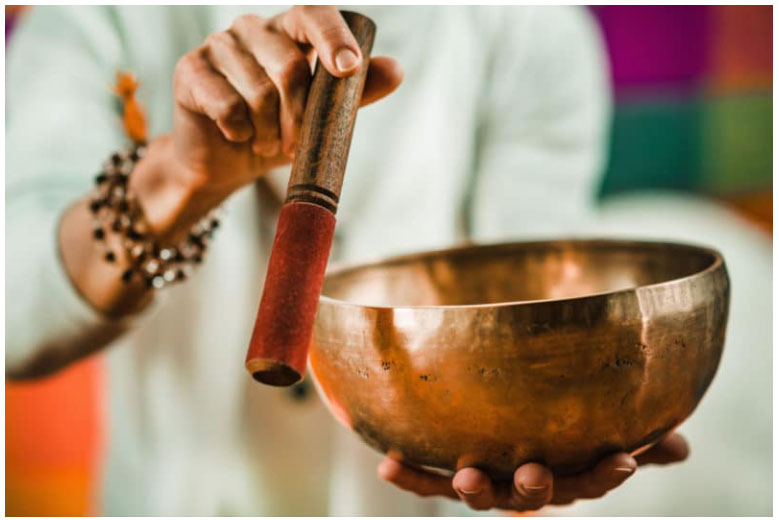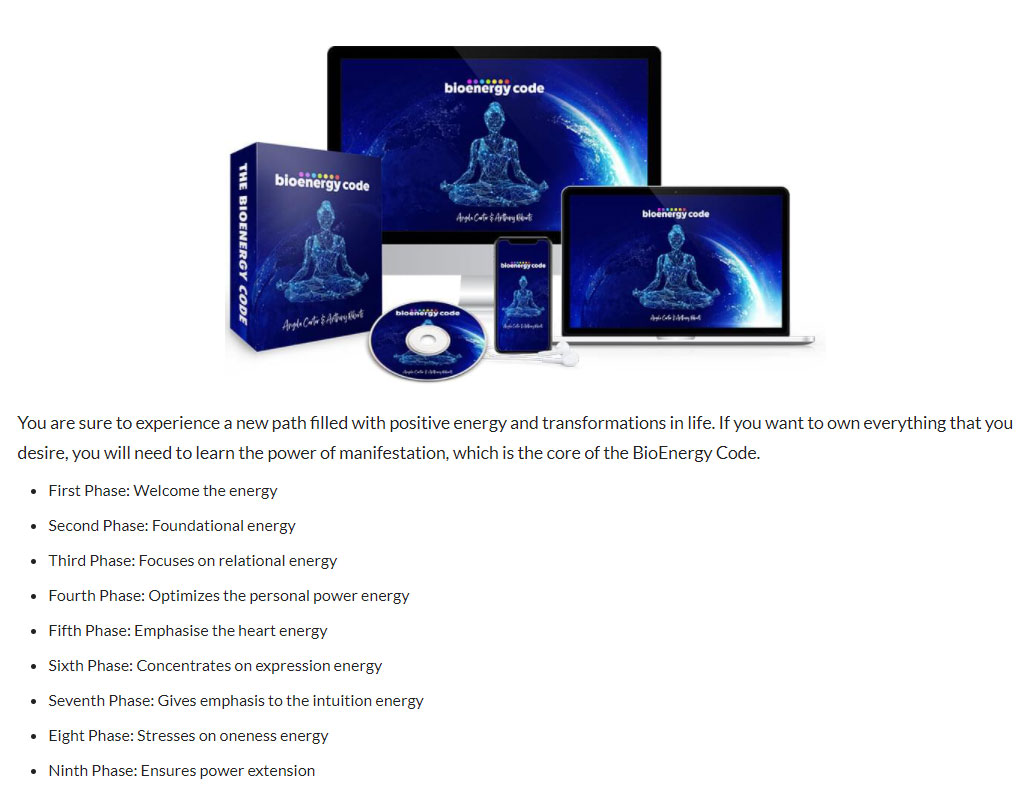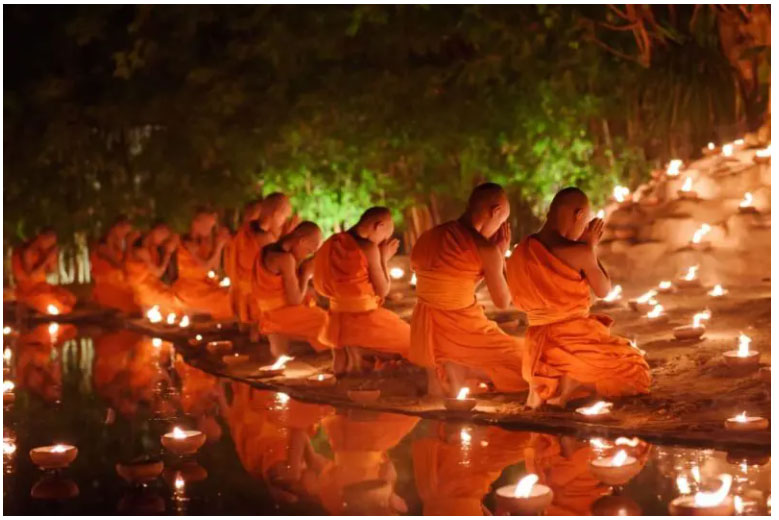Om mani padme hum
Mantras are short phrases, usually in Sanskrit, which are used by Buddhists, especially in the Tibetan tradition of mahayana, to focus the mind on spiritual meaning. Probably the best known mantra is "Om Mani Padme Hum" (Sanskrit pronunciation) or "Om Mani Peme Hung" (Tibetan pronunciation). This mantra is associated with the Bodhisattva Avalokiteshvara (called Chenrezig in Tibet) and means "Om, lotus jewel, hum".
The different syllables
OM, is not a word strictly speaking, but more an evocation of spiritual power and the presence of the Absolute. This syllable is renowned throughout the world and Asia, especially in Hinduism.
• The word Mani means "jewel" or "pearl".
• Padme is the lotus flower.
• Hum represents the spirit of the Enlightenment.
For Tibetan Buddhists, the "lotus jewel" represents what is called bodhicitta and ultimately the wish for liberation of the six kingdoms.
Each of the six syllables of the mantra is supposed to aim at the liberation of kingdoms that each suffer in a different way.
The mantra is most often recited, but the words can also be read repeatedly or written down.
History and meaning
Om mani padme hum is an ancient mantra that is related to the Bodhisattva of Compassion, Avalokiteshvara, and thus to the Dalai Lama, who is considered an incarnation of Avalokiteshvara.
In Tibetan, it is said: "Chenrezig po kang chen pay lha kyel", which means: "Chenrezig is the Buddha of the Tibetans. "By practicing the mantra of Chenrezig, we believe that we can accumulate merits and purify our illusions.
A mantra is a set of sounds, syllables or words. This set will create a transformation, which will bring us light in bad times.
The most common meaning offered for the mantra is usually something like "Behold! The jewel of the lotus! "or "Praise to the Lotus Jewel. "But it is almost impossible to give an exact meaning to "om mani padme hum," as it has been interpreted in many ways.
Of course, if we look at the spiritual meaning as a whole, it goes far beyond the syllables in the literal sense of the word.

The meaning of Om Mani Padme Hum according to two Buddhist masters
From His Holiness the 14th Dalai Lama
It is very good to recite the mantra Om mani padme hum, but while you do so, you should think about its meaning, as the meaning of the six syllables is great and vast. The first, OM symbolizes the practitioner's impure body, speech and mind; it also symbolizes the exalted and pure body, speech and mind of a Buddha. The four syllables will help to trace the path. MANI, which means jewel, symbolizes the altruistic intention to become enlightened, compassionate and loving. The two syllables, PADME, meaning lotus and symbolizing wisdom. Purity will be achieved through a combination of method and wisdom, which is found in the syllable hum. The latter represents indivisibility.
Thus, through this mantra, the body can be transformed, just like the word or the mind, and rise to elements as pure as those belonging to a Buddha.
By Dilgo Khyentse Rinpoche
The mantra Om Mani Padme Hum is easy to say and yet very powerful, as it contains the essence of the entire teaching. When you say the first syllable Om, the mantra is blessed to help you achieve perfection in the practice of generosity, while Ma will help you achieve perfection in the practice of pure ethics. Finally, Ni will help you to practice tolerance and patience to perfection. Pa, will help you to reach perfection in perseverance. Me, will work on perfection in concentration, and finally the sixth syllable Hum will help you to reach perfection in the practice of wisdom.
Thus, when you recite the mantra, you will reach perfection in each of the above practices.
The benefits of the mantra Om Mani Padme Hum
The mantra Om Mani Padme Hum has spiritual benefits. Here is what happens when you chant this mantra.
When you say or chant "Om", you produce the sound that represents purity. Purity of body, mind and speech. This sound also creates relaxation and inner peace, which is one of the benefits of chanting it, especially when it is a group chant, where the sound of the choir really amplifies the effects.
Then you say "Mani Padme Hum". And those words represent the path.
Mani means love and compassion. It is love and compassion for all beings and for oneself.
Padme means lotus and represents wisdom. Wisdom is the wisdom of the Dharma, the Buddhist path. The lotus reminds us to follow the Dharma path and especially the noble eightfold path.
Hum means enlightenment, which is the highest state we can attain.
Put them together and you get: "Purity of mind, body and speech. The path. Love and compassion. Wisdom. Enlightenment. »
Rephrase this and you will get: "Be pure in body, mind and speech. Follow the path of wisdom with love and compassion. Buddhahood will result.
In other words. If you want to become a Buddha, follow the path of Dharma wisdom with love and compassion. Thus, the benefits of the mantra Om Mani Padme Hum are that it trains us to follow the Dharma, to live with purity, love and compassion, and that this will eventually lead to enlightenment.

Mantra and yoga practice
This special yogic chant is in Sanskrit. It consists of four words, and these four melodic words are all the words that are on the colorful Tibetan prayer flags.
In English, this rhythmic chant literally translates as "Praise to the Lotus Jewel". This may not make much sense to new or even well-trained yogis, but the essence of the mantra is powerful and pure.
As the Dalai Lama said, its meaning is "great and vast" because all of the Buddha's teachings are wrapped in this one phrase.
Why do yogis decide to chant this mantra?
Chanting in general soothes the senses and sends energy to the parts of your body (or chakra centers) that need it most.
Calming sounds are known to help heal the body and mind. In addition, with all the divisions in the world, singing allows all voices to come together to show the unity and oneness not only of the self, but also of the community and the world.
There are many reasons why yogis choose to chant this powerful mantra, but here are some of the main benefits:
• It clarifies the mind, allowing you to detach yourself from the ego.
• Words help release the karmas that can hold you back.
• These words can send a message about the kind of life you wish to manifest
• It empties the body of everything but an inner consciousness.
Conclusion on om mani padme hum
The mantra om mani padme hum is therefore truly practiced in Buddhism and Hinduism, but also in yoga. It also has many benefits, and you should feel calmer after chanting it.
Did you know this mantra? Have you ever practiced it in a yoga session?


